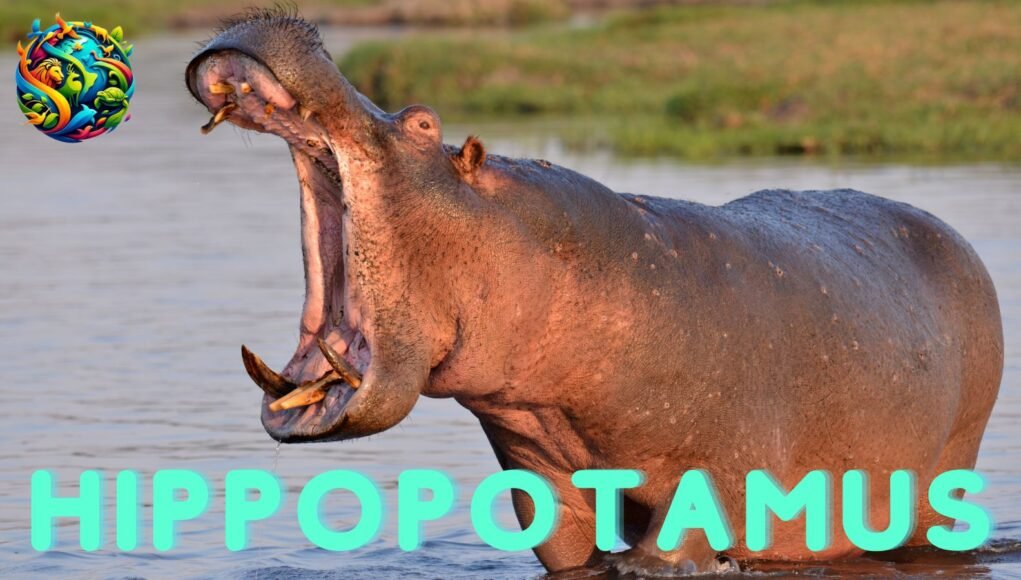Hippopotamus: Ultimate Giant Ruler of African Waters
Introduction
The hippopotamus, commonly known as the river horse, is a semi-aquatic mammal found in sub-Saharan Africa. Despite its bulky, lumbering appearance, it is one of the most agile and dangerous animals in the wild. Known for spending most of its life in the water, it plays a crucial role in ecosystems by controlling vegetation and maintaining riverbanks.
One of the most fascinating aspects of these creatures is their aggression and unpredictability. They are responsible for more human fatalities in Africa than lions, crocodiles, or elephants. Their immense bite force, large size, and territorial instincts make them formidable creatures.
The hippopotamus has been the subject of folklore, conservation efforts, and scientific studies for centuries. Their complex social structure, unique adaptations, and semi-aquatic lifestyle set them apart from other large mammals.
Hippopotamus Facts
- Hippos are the third-largest land mammals after elephants and rhinos.
- They can run faster than humans, reaching speeds of 30 km/h (19 mph) on land.
- Hippos spend up to 16 hours a day submerged in water to keep cool.
- Their skin secretes a natural sunscreen, often called “blood sweat”, which acts as an antiseptic and protects against sunburn.
- They have a bite force of around 1,800 PSI, capable of crushing bones and breaking boats.
- Despite their large size, they are strict herbivores, eating mainly grass.
- They use vocalizations, body language, and even subsonic sounds to communicate.
- Their closest relatives are whales and dolphins, as they share a common ancestor from over 55 million years ago.
Habitat and Food
Habitat
Hippopotamuses are native to Africa and are primarily found in slow-moving freshwater systems such as:
- Rivers
- Lakes
- Swamps
- Mangrove marshes
They require deep water bodies to submerge themselves completely and muddy banks to rest. Their presence is essential to maintaining healthy aquatic ecosystems as they shape riverbanks and prevent overgrowth of vegetation.
Food
Unlike many large mammals, hippos are strictly herbivorous. Their diet consists mostly of:
- Short grasses
- Aquatic plants
- Occasionally, fallen fruits or crops
Despite their massive size, they consume only around 40 kg (88 lbs) of vegetation per day. They graze at night and travel several kilometers in search of food.
Appearance
Size and Weight
- Adult males can weigh between 1,500 to 3,200 kg (3,300–7,000 lbs).
- Females are slightly smaller, weighing between 1,300 to 2,500 kg (2,900–5,500 lbs).
- They can reach 1.5 meters (5 feet) in height at the shoulder.
Skin and Color
- Their skin is thick and hairless, with a grayish to brownish hue.
- The pinkish secretion on their skin acts as a natural sunscreen and antibiotic.
Head and Mouth
- Their broad, wide snout helps them breathe while submerged.
- They have huge canine tusks that grow up to 50 cm (20 inches) long.
- Their bite force of 1,800 PSI makes them one of the strongest biters in the animal kingdom.
Legs and Movement
- Their short but muscular legs support their heavy bodies.
- Despite their bulk, they can move swiftly on land and underwater.
Types/Subspecies
There are two species of hippopotamus:
- Common Hippopotamus (Hippopotamus amphibius) – Found across sub-Saharan Africa.
- Pygmy Hippopotamus (Choeropsis liberiensis) – A smaller, forest-dwelling species native to West Africa.
Predators and Threats
Natural Predators
While adult hippos are too large for most predators, their young calves may fall prey to:
Mother hippos are extremely protective and will violently attack any predator that comes too close.
Human Threats
The biggest threats to hippos come from human activities:
- Poaching for their ivory-like teeth and meat.
- Habitat destruction due to farming and urbanization.
- Climate change, affecting water levels in their habitats.
Mating and Reproduction
Mating Behavior
- Dominant males establish territories in water bodies and control groups of females.
- Mating occurs entirely in water, often accompanied by loud grunts and splashes.
Gestation and Birth
- Gestation lasts about 8 months.
- A single calf is born underwater and immediately swims to the surface.
- Calves nurse underwater, using special muscle control.
Mother-Calf Bonding
- Mothers protect their young from predators and aggressive males.
- Calves stay close to their mother for several years.
How They Communicate
Hippos use a variety of methods to communicate with each other.
Vocal Communication
- Grunts and Bellows: Used for social interaction.
- Subsonic Vibrations: Communicate through low-frequency sounds.
- Aggressive Roars: Used during conflicts or mating displays.
Body Language
- Yawning: A sign of dominance or threat.
- Splashing and Snorting: Indicate aggression.
- Head Shaking: Signals excitement or distress.
Movies Featuring Hippos
Hippopotamuses have been featured in various films and documentaries:
- Madagascar (2005, 2008, 2012) – Featuring Gloria, the sassy hippo.
- The Lion King (1994) – Background animals in African scenes.
- Dora the Explorer – Educational episodes about hippos.
- BBC Wildlife Documentaries – In-depth studies on hippo behavior.
Pronunciation in Different Languages
- English: Hipopotamus
- Spanish: Hipopótamo
- French: Hippopotame
- German: Flusspferd
- Swahili: Kiboko
- Chinese: 河马 (Hémǎ)
- Japanese: カバ (Kaba)
FAQs
1. Are hippos dangerous?
Yes, hippos are among the most aggressive animals and are known to attack humans and boats.
2. Can hippos swim?
No, they cannot swim but move by walking along the riverbed.
3. Why do hippos have large teeth?
Their tusks are used for fighting and defense rather than eating.
4. Do hippos eat meat?
They are herbivores, but rare cases of scavenging meat have been observed.
5. How do hippos sleep?
They sleep both in water and on land, using a natural breathing reflex to stay submerged.
6. How long do hippos live?
They live 40–50 years in the wild and up to 60 years in captivity.
7. Can hippos outrun humans?
Yes, they can reach speeds of 30 km/h (19 mph) on land.




